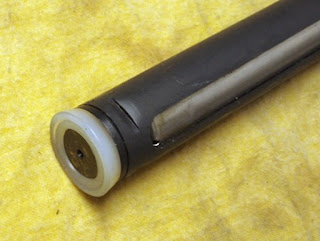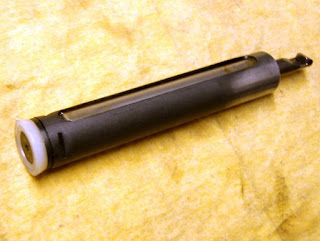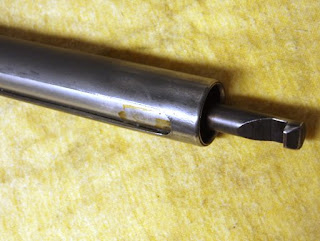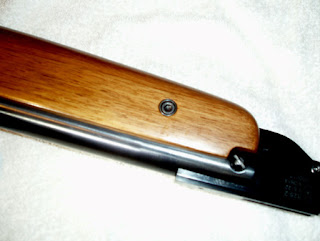
Replaced the flat head head bolts in the trigger guard with allens. The front bolt is a 6mm x 1.0, the rear a 4mm x .70. Just out of curiosity, I pulled the trigger guard from a HW-97K. They're not quite identical, but they are interchangeable. The BAM guard is slightly taller. The HW guard is more substantial. Definitely more metal in the German guard.

This is where I got lazy and tried to install a sling swivel stud around midnight. I eyeballed the pilot hole. Totally nailed it, but when I started to drill a flat for the stud to seat on, the stock splintered out. Making the best of a bad situation, I used a 1/4" wood chisel and carved away the splintered wood creating a larger flat for the swivel. The stock is so weird with the high cheek piece and the thumbhole, it doesn't look like a train wreck. I found that Minwax Special Walnut #224 was an exact match. Lot of extra work because I just couldn't wait until morning and do the job on a drill press.
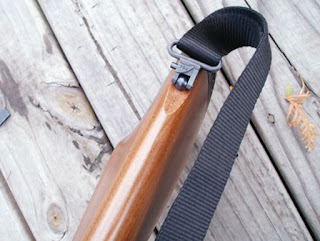
The good news is the swivel lays flush against the flat when carrying the rifle on the shoulder.

I mentioned that the barrel/breech block assembly was used on other BAM rifles. The barrel is dovetailed for a front sight. The B26-2 comes with a black painted steel muzzle weight. It didn't do much for me, so I went back to my box-o-parts for something else.
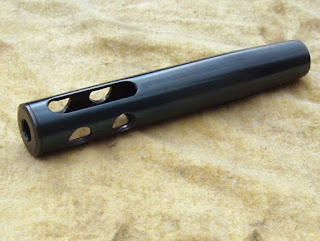
This muzzle brake was a bit more interesting.
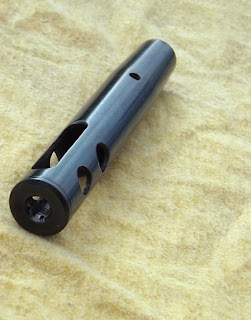
The slots were milled using a Taig lathe with the milling cross slide attachment. It was my second attempt at milling.

Two short 5mm x .80 set screws secure the brake to the barrel. For the finish, I used a cold blue. I first tried Permablue, then tried 44-40, then Superblue. I've found it to be really helpful having 2 or 3 kinds of cold blues on hand when trying to match a part--or just get one to work. The first two bluing compounds gave thin, splotchy coverage on this particular piece of steel. The Superblue worked much better.
Had good results by not leaving the bluing solution on the part for longer than 20 or 30 seconds. Rinse long and often with cold water to stop the bluing process and help prevent further color changes. Wet a piece of 0000 grade steel wool with bluing solution and buff very lightly to blend, then rinse some more. I've been trying to figure out how to prevent the rusting that usually occurs a couple days after cold bluing--even if the part has been oiled. So far, heating the part with a blow torch to about 200 degrees and then coating it in STP Gear Oil has worked incredibly well. The STP just seems to melt onto the hot steel, leaving a thin, slick surface behind.
Almost forgot, the B26-2 barrel diameter is 0.620".

